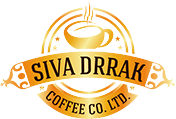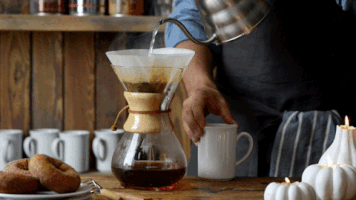Câu chuyện cà phê
How to Brew Coffee
Coffee is personal – the right way to make it is how you like it best.
That being said, mastering a few fundamentals will help you perfect your technique. From here, we encourage you to experiment with different roasts, origins, or preparation methods.
Here are our tips to brew a classic cup of coffee.
The Equipment
Make sure that your tools — from bean grinders and filters to coffee makers— are thoroughly cleaned after each use.
Rinse with clear, hot water (or wipe down thoroughly), and dry with an absorbent towel. It’s important to check that no grounds have been left to collect and that there’s no build-up of coffee oil (caffeol), which can make future cups of coffee taste bitter and rancid.
The Beans
Great coffee starts with great beans. The quality and flavor of your coffee is not only determined by your favorite brewing process, but also by the type of coffee you select. There can be a world of difference between roasts, so check out roasting types.
Some of the flavor factors include:
The country and region of origin
The variety of bean – arabica, robusta – or a blend
The roast type
The texture of your grind
While there are a lot of choices, remember that there’s no right or wrong — for instance, you can choose a dark, flavorful espresso roast coffee and still have it ground to be brewed in a drip system. Have fun trying and enjoying different combinations.
Freshness
Purchase coffee as soon as possible after it’s roasted. Fresh-roasted coffee is essential to a quality cup, so buy your coffee in small amounts (ideally every one to two weeks). Check out our helpful tips on how to store coffee to keep it as fresh and flavorful as possible.
And please, never reuse your coffee grounds to make coffee. Once brewed, the desirable coffee flavors have been extracted and only the bitter ones are left.
The Grind
If you buy whole bean coffee, always grind your beans as close to the brew time as possible for maximum freshness. A burr or mill grinder is best because the coffee is ground to a consistent size.
A blade grinder is less preferable because some coffee will be ground more finely than the rest. If you normally grind your coffee at home with a blade grinder, try having it ground at the store with a burr grinder – you’ll be surprised at the difference!
The size of the grind is hugely important to the taste of your coffee. If your coffee tastes bitter, it may be over-extracted, or ground too fine. On the other hand, if your coffee tastes flat, it may be under-extracted, meaning your grind is too coarse.
If you’re having the coffee ground to order, tell the professionals where you purchase your coffee exactly how you will be brewing it. Will you be using a French Press? A flat or cone drip filter? A gold mesh filter? They will grind it specifically for your preparation method.
The Water
The water you use is very important to the quality of your coffee. Use filtered or bottled water if your tap water is not good or has a strong odor or taste, such as chlorine.
If you’re using tap water, let it run a few seconds before filling your coffee pot, and be sure to use cold water. Avoid distilled or softened water.
Coffee-to-Water Ratio
A general guideline is called the “Golden Ratio” – one to two tablespoons of ground coffee for every six ounces of water. This can be adjusted to suit individual taste preferences.
Check the cup lines or indicators on your specific brewer to see how they actually measure. And remember that some water is lost to evaporation in certain brewing methods.
Water Temperature
Safety first! Of course, any time you are working with heat and hot beverages, take all necessary precautions for everyone from those preparing coffee, to those being served, and drinking coffee.
Your brewer should maintain a water temperature between 195 to 205 degrees Fahrenheit for optimal extraction. Colder water will result in flat, under-extracted coffee, while water that is too hot will also cause a loss of quality in the taste of the coffee. (However, cold brew does not need any heat.)
If you are brewing the coffee manually, let the water come to a full boil, but do not over boil. Turn off the heat source and allow the water to rest a minute before pouring it over the grounds.
Coffee usually cools rapidly after being served, depending upon the container from which it is being served. And, many coffee drinkers may add cream or milk which also has a cooling effect. Ultimately, the temper
Source Ncausa



